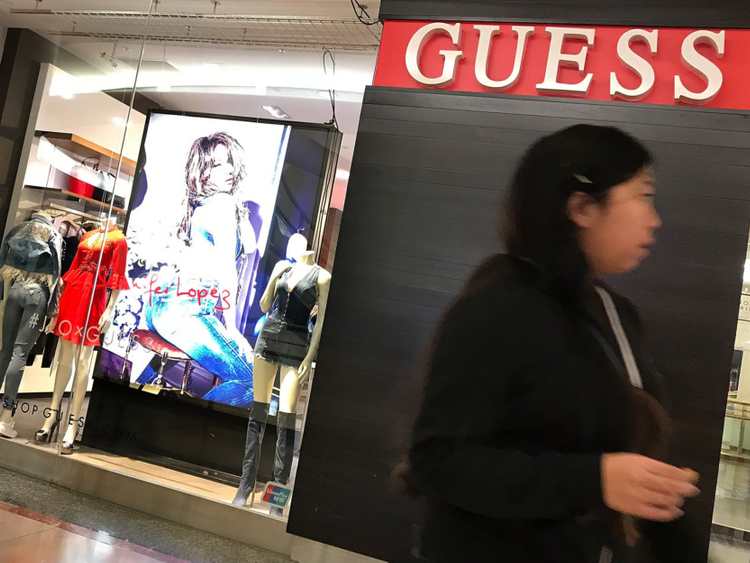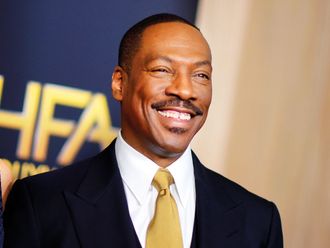
A week after accusing Guess co-founder Paul Marciano of sexual misconduct, model Kate Upton shared a detailed account of the alleged events with Time magazine.
“Paul used his power to make me feel insecure and powerless, but I’m not going to let him intimidate me anymore,” she said. “These men think they are untouchable, but times are changing.”
Upton, 25, rose to fame after appearing in the Sports Illustrated swimsuit issue and several fashion ad campaigns, including Guess. She accused Marciano of exploiting his power over her career by groping her and forcibly kissing her during shoots for the 2010-11 campaign, also citing many instances of verbal harassment. Much of the conversation surrounding the #MeToo movement has involved Hollywood, but her account draws attention to sexual misconduct that has long been a part of the fashion industry as well.
“Nobody has a right over my body just because they view me as sexy or a sex icon,” she told Time. “I think people need to be educated on the definition of consent.”
Upton said she felt uncomfortable being alone with Marciano, who allegedly fondled her breasts on the first day of shooting a lingerie campaign in 2010. He continued to aggressively touch her throughout the shoot, she said, and she was fired after denying him access to her hotel room. Photographer Yu Tsai, who refused to leave the shoot after Marciano told him to go, was also let go. (Yu Tsai corroborated Upton’s allegations, according to Time.)
Marciano’s behaviour got worse during a subsequent shoot for a Guess Jeans campaign, Upton said, as his language was “extremely dominant and possessive.”
“At one point, to avoid Paul coming to set, I told him my boyfriend was going to be there,” she said. “He was absolutely furious at that. It was an emotional and non-stop battle of games, power struggles and creative avoidance tactics.”
On the final shoot in 2011, Marciano allegedly called Upton a “fat pig” and spread rumours that she was drunk on set after partying all night. She rose to fame with her Sports Illustrated cover afterward, and later refused a high-paying offer to appear in the 2012 Guess campaign.
Working with Marciano took “a huge toll on my confidence and self-worth,” Upton said. She began to slouch to hide her breast size and hated her body. The self-doubt reflects the sentiment of the initial tweet Upton sent out, in which she expressed disappointment in the “iconic women’s brand” for continuing to empower a man who made her feel the opposite way.
Marciano denied Upton’s allegations in a statement to Time: “I have never been alone with Kate Upton. I have never touched her inappropriately. Nor would I ever refer to a Guess model in such a derogatory manner.” (The Washington Post has reached out to reps for Upton and Guess.)
Model Miranda Vee shared a screenshot of Upton’s tweet on Instagram, thanking her for telling her story, and detailing her own accusations of sexual harassment against Marciano.
Upton told Time that models are often told they need to tolerate inappropriate behaviour in order to be successful. It’s difficult for victims to speak up when industry executives are already aware of the behaviour and “have previously accepted it.”
The “culture of complacency,” as Upton put it, has long been in place. Photographer Terry Richardson has faced accusations of sexual harassment and assault for years, and New York magazine notably published a profile of him in 2014 titled “Is Terry Richardson an Artist or a Predator?” It then ran a few models’ detailed responses to the piece. Richardson continued to find work with major publications until Cond Nast International banned him from forthcoming photo shoots this past October, the same month as the New York Times published its initial Harvey Weinstein expos.
(In an October statement, a representative for Richardson explained that the photographer is “an artist who has been known for his sexually explicit work,” and said all the subjects consented to participating.)
Other publications, such as Net-a-Porter and Hearst magazines — which owns Elle, Esquire, Harper’s Bazaar and Marie Claire — followed suit. Brands that had previously worked with Richardson — Bulgari and Valentino, for example — issued statements against him, too.
The wheels began to turn, and designers like Prabal Gurung were forced to consider the role they might have played in allowing sexual misconduct to continue. Posting a supportive message online is not enough, he told The Post in October.
“Fashion has begun welcoming a broader array of people into its ranks,” he said. “And perhaps the knowledge that fashion has room for more dreamers, storytellers and innovators, will make those folks more willing to stand out by speaking up. We as human beings are very afraid of confrontation. I always believe confrontation results in dialogue and that leads to solutions.” Even the Sports Illustrated Swimsuit Issue itself appears to be engaging in that kind of dialogue, putting out a #MeToo-themed issue set to land next week.
Last month, as the movement continued to pick up steam, several male models went public with allegations against famed photographers Mario Testino and Bruce Weber. Fifteen models who had worked with Weber on risqué advertisements for Calvin Klein, Abercrombie & Fitch and the like told the New York Times they’d been coerced into “unnecessary nudity” and sexual behaviour. Testino, known for his Towel Series, faced similar accusations of sexual harassment and unwanted advances. Both photographers denied the accusations.
Gene Kogan, who previously worked as an agent at Next Management, told the Times, “If you said you were not going to work with someone like Bruce Weber or Mario Testino, you might as well just pack it in and go work in another industry.”
Models are incentivised to “not ruffle any feathers,” Upton said to Time magazine. She added that higher-ups speaking out against sexual misconduct in the fashion industry might be the only way to prevent abuses of power.
“If the models don’t get paid, the agencies and managers and everyone around them don’t get their cut,” she said. “Agencies need to be stronger when they hear these stories. They’re saying, ‘Oh, Kate’s not OK with this’ and bringing in the next model. The next model needs to know why I’m not OK with this.”












